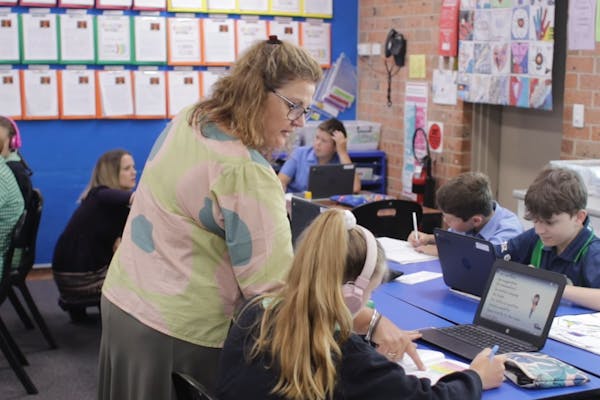Developing a system wide approach to learning with the Diocese of Lismore Catholic Schools
Developing a system wide approach to assistive technology with The Diocese of Lismore Catholic Schools
The Diocese of Lismore Catholic Schools accommodates 18,000 students across 45 schools. Those schools are spread over a wide area in both urban and rural locations. The student population varies, some areas are more culturally diverse than others, some have a higher percentage of indigenous students while others have more English as a Second Language learners.
Around 18% of students are receiving adjustments, many have a diagnosis but others will be based on assessment by teachers and other professionals. All of these students are included in the Nationally Consistent Collection of Data (NCCD).
Tangible results
- 7000 students using Read&Write
- 1.9 million uses of the toolbar
- Usage continues to increase
Background
We had a chat with Kara Collyer, an Inclusion Officer from the Diocese of Lismore Catholic Schools Office. “The usage of devices varies from school to school and grade to grade. Some schools have shared devices, some ask kids to bring their own and some have one device per student. All secondary schools in the diocese have 1 to 1 devices”.
Some schools were already using blended learning and had run trials before the pandemic. For other schools blended learning was new to them. “We have to consider socio-economic factors too, with a diverse student population there are always going to be issues around access to technology and access to the internet”.

The solution
In developing a system wide approach to Assistive Technology to support learning and teaching we wanted a tool that could be adapted and used by all students and all teachers, in all settings. The goal was to reduce the barriers students face when accessing the curriculum.
“Read&Write stood out because we wanted something that would work across platforms and could be used on various devices”
As a result Kara tells us “Students with learning disabilities have benefited the most from Read&Write , this has allowed them to engage with text and access the curriculum on the same basis as their peers without looking different. Which is important to lots of students. It has also helped teachers to provide adjustments that let all students access the curriculum in a way that suits their learning needs”.
“It makes the learning more accessible, but it also requires the teachers to lead the technology and be able to use it themselves. Technology provides adjustments that allow all students to access the curriculum in different ways that suit their learning profile and preferences, like text to speech, videos, and instant feedback”
Tangible results
Just in 2021 alone there were 7000 students using Read&Write across the Diocese, which is 39% of the student population. When we take a look at how many times the tool bar was used to perform a task, that number is a massive 1.9 million uses.
“Blended learning was definitely helped by the use of Read&Write. We saw that the students who had been using the tool before the pandemic were more successful in achieving their learning goals, while learning from home. The others had to become familiar with the new way of learning”
The voice notes tool was very popular, teachers realised that they could give quick feedback to students without having to set up a video call. The students also used voice notes to collaborate on projects, they found that explaining their thoughts verbally, was often more effective than through text.
Giving all students access to tools fits with the Universal Design for Learning principles enacted within the Diocese, as Kara says “we want to reduce learning barriers and give everyone choice around their learning”.

Lasting impact
The decision was made to allow all schools to have access to the software, and data shows that usage is going up and up.
Kara went on to tell us that the Inclusion Officers, like her, provide training on Read&Write. They have built their own capacity to roll out training on Assistive Technology for all teachers. During the lockdowns they were able to provide training to Teacher Assistants too, to make sure everyone knew how to use tools to support learners. Kara mentioned that they do “Sand Pit Sessions” where teachers can drop in, have a look at 3 or 4 tools, try them out and then go.
So what’s next for Kara? She tells us that her goal is to make sure all teachers and students know that the tools are available for them to use whenever they need. The Inclusion Officers also deliver training to all recently qualified teachers - what better way to make sure everyone starts off with Universal Design for Learning at the heart of what they do?
Give students the tools they need to succeed
How can we use technology to amplify teaching? - a roundtable discussion
Writing and expression tools
If you would like to find out more about Read&Write for your school, please contact the Asia/Pac team below